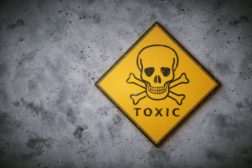Home » Keywords: » environmental safety
Items Tagged with 'environmental safety'
ARTICLES
Oil and gas industry gets new guidelines for well construction interface
Post-Macondo task force recommended changes
December 4, 2013
Choking on an overdose of credentials?
The EHS field is not fully defined in scope and function
August 1, 2013
Safety’s surge in the energy industries
Gas detection goes wireless
Access real-time threat data from virtually anywhere
July 9, 2013
Are “green jobs” safe?
The European Agency for Safety and Health at Work has set a number of challenging targets for reductions in carbon emissions and waste
April 16, 2013
Get our new eMagazine delivered to your inbox every month.
Stay in the know on the latest safety trends.
SUBSCRIBE TODAYCopyright ©2024. All Rights Reserved BNP Media.
Design, CMS, Hosting & Web Development :: ePublishing







